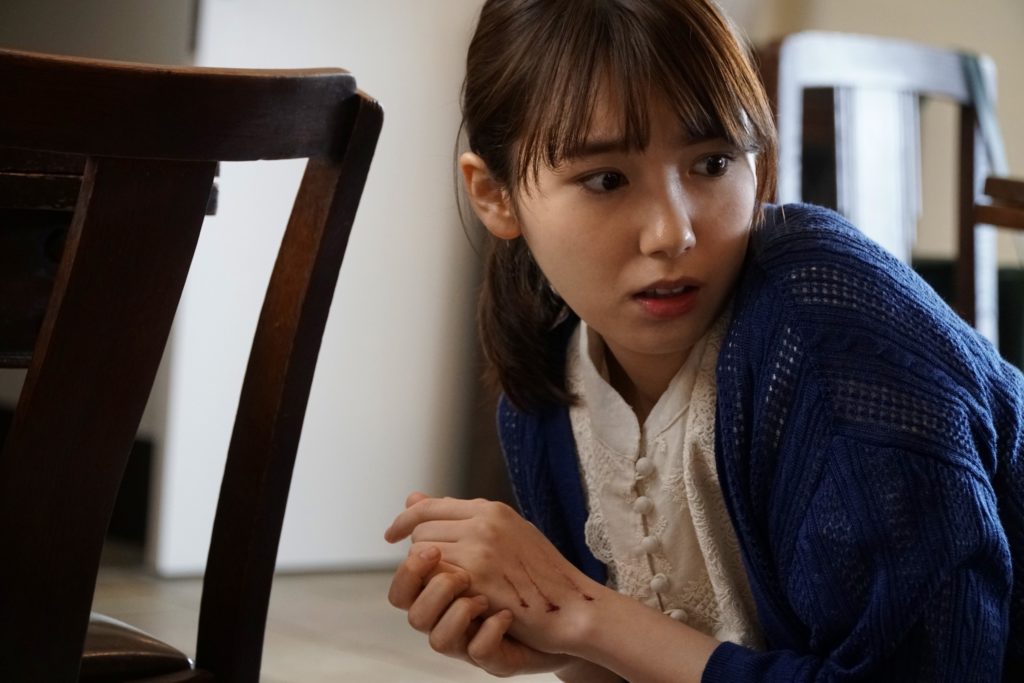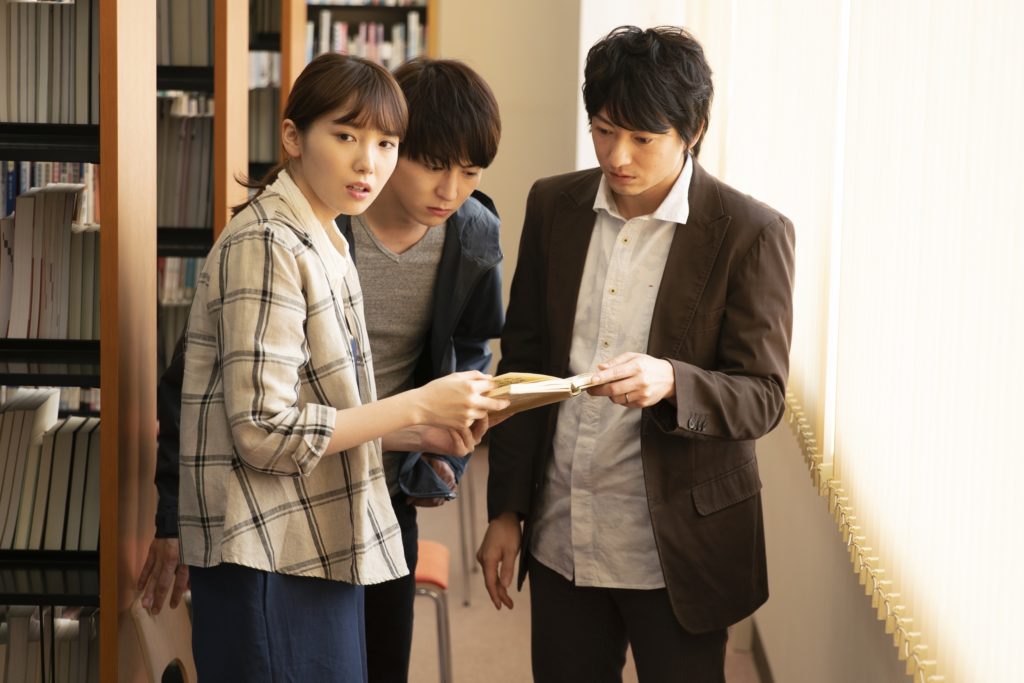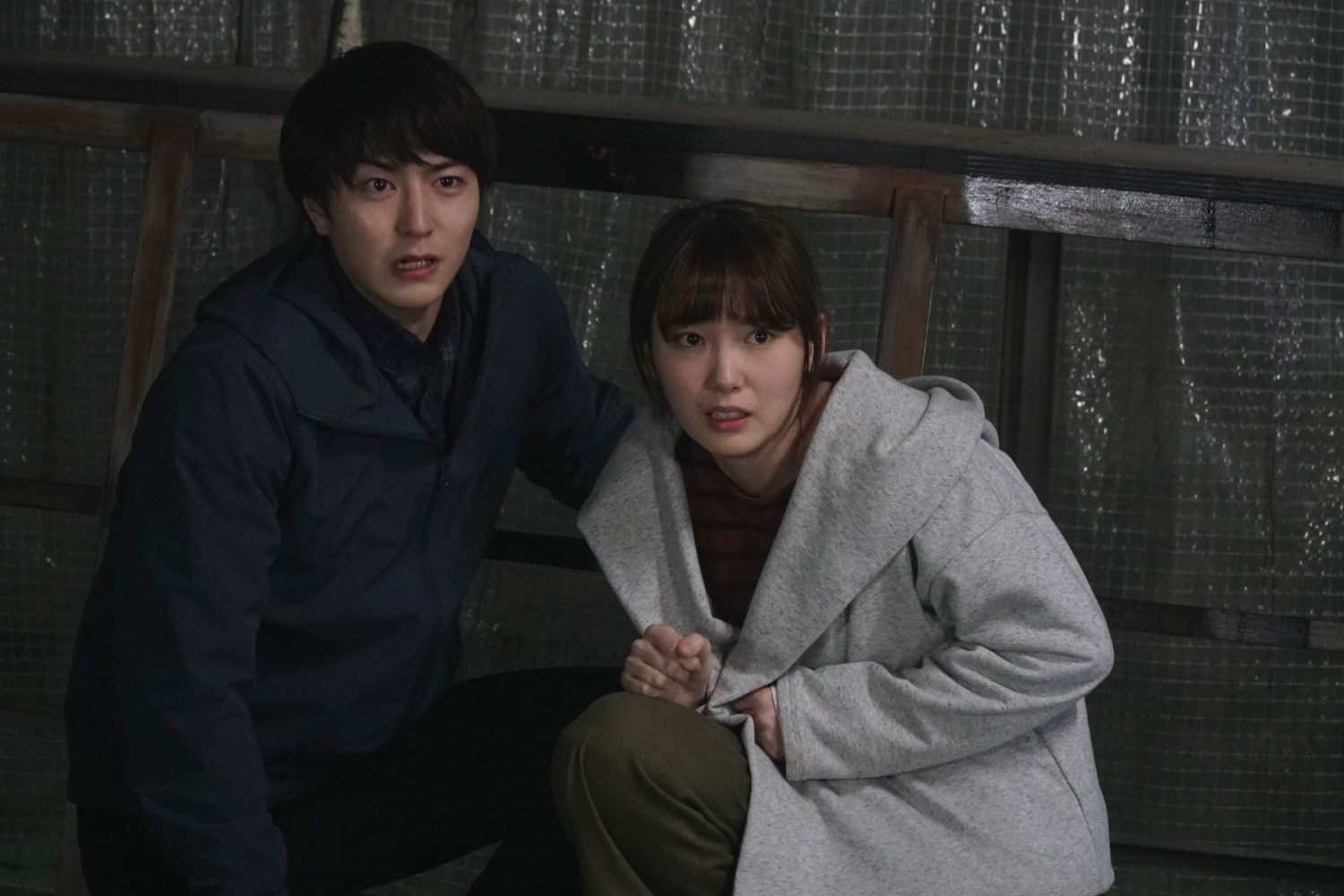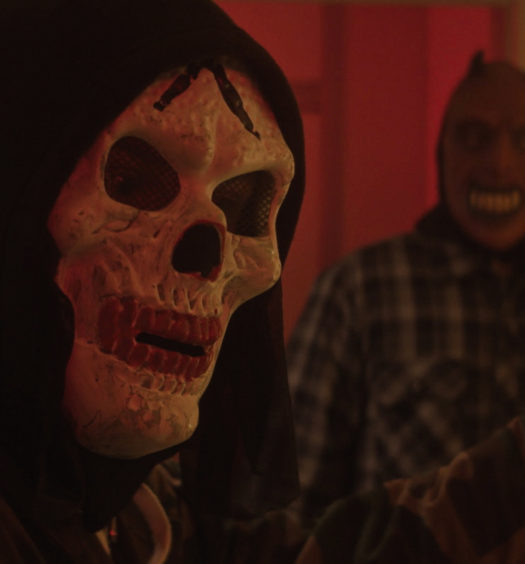Hirotaka Adachi’s Stare begins with a bang. In short order, we witness the mysterious deaths of two young Japanese friends. Over a meal, Kana tells her friend Mizuki an urban legend. Kana cries out in fear and recoils from an unseen assailant. Across town, Kazuto calls his brother Haruo and offers a cryptic apology. Kana and Kazuto hear the chiming of a bell, and tell their invisible attacker to stay away. They both fall victim to what appears to be cardiac arrest—with one strange side effect. The bodies display symptoms of “increased intraocular pressure.” To put it in layman’s terms, their eyeballs exploded.
Mizuki and Haruo cross paths as they attempt to unravel what happened to their friends. They learn that Kana and Kazuto had recently traveled with a third friend, Eiko. Seeking answers, Mizuki and Haruo visit Eiko. Eiko and her friends had visited a resort, and while they were there, they entertained each other with scary stories. A worker at the resort joined in, and shared a story of a woman with abnormally large eyes who would follow and kill anyone who knew her name. Eiko omits the name as she tells the story. She is visibly unnerved. Eiko excuses herself to go make tea for her guests. A few moments later, a loud noise alerts Haruo and Mizuki and they go to investigate. Eiko has attempted suicide. The pair are able to save Eiko, who mutters one sentence. “Shirai-san will come.”

The bodies display symptoms of “increased intraocular pressure.”
Eiko is taken to the hospital, and soon we see the specter that has up to now remained hidden. Shirai-san looks in many ways similar to the spirits seen in many other Japanese horror films. There are a few features that set her apart. Calling her eyes abnormally large is no exaggeration. They are reminiscent of Sadako’s eye seen in Hideo Nakata’s original Ring, though taken to even more of an extreme. And those eyes are pitch black. Her mouth is ringed red with blood. Shirai-san’s hands have been pierced through, and a cord hung with bells runs through the holes. Taken together, it’s a nightmarish image that won’t soon be forgotten.
With the body count continuing to climb, a reporter named Mamiya joins in the search for an explanation. The three try to find the root of the curse, and a way to reverse it. Many of the plot points from here will be familiar to viewers familiar with modern Japanese horror. In fact, the construction is remarkably similar to Nakata’s Ring. But surprisingly, Stare succeeds where Nakata’s Sadako stumbled (see our review here). While the structure may be familiar, the nuances of the story are different enough to remain engaging.

Stare succeeds where Nakata’s Sadako stumbled
Perhaps the most successful element that Stare brings to the table is the method in which Shirai-san’s curse is spread. In many ways, the struggles of recent entries in the Ring universe can be traced back to its source—that cursed videotape. What was once frightening and enigmatic has become a relic of a bygone age, and attempts to bring Sadako’s curse to life through more modern vectors like cell phones and YouTube have often felt ham-fisted at best. But Stare’s curse spreads simply through the spoken word. Telling scary stories will never go out of style, and hearing just the name of Shirai-san is sufficient for the evil to be perpetuated.
Much of one’s enjoyment of Stare will likely depend on their appreciation of (and potential burnout to) the Japanese horror of the last twenty years. The film undoubtedly covers ground well-trod. But for fans of the genre, Stare proves that the formula can still produce potent scares. Release information is scant for now (the version I watched had a 2020 copyright date attached), but Stare is worth keeping your eyes peeled for.
Stare had its world premiere at the 2019 Fantasia International Film Festival.
Fantasia 2019: ‘Stare’ Feels Like a Forgotten J-Horror Classic [Review]
Stare succeeds where Sadako stumbled, proving that even familiar tropes from Japanese horror can still be effective.































